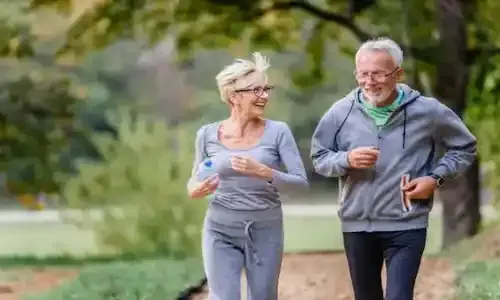As we age, it's crucial to prioritize physical activity to promote healthy aging. Exercise and regular physical activity have been proven to have numerous benefits for our overall well-being as we grow older. In this article, we will explore the latest research and insights on how exercise can help us stay healthy and vibrant throughout the aging process. We will also provide practical tips on how to incorporate exercise into our daily lives and stay motivated to maintain an active lifestyle.
The Wisdom of Joseph Pilates
Joseph Pilates, a pioneer in the field of physical fitness, emphasized the importance of maintaining a healthy spine for physical and emotional well-being. He believed that a flexible and strong spine was the key to maintaining youthfulness even as we age. His exercise system, known as Pilates, focuses on developing the deep core muscles in the back and abdomen to support the spine. Pilates has gained popularity in recent years as an effective exercise method for older adults, offering benefits such as improved mobility, strength, and posture well into their 80s and beyond.
Understanding the Neuromuscular Changes
As we enter our 50s, our bodies undergo various anatomical and physiological changes. One of the primary changes is a decline in the production of testosterone, which can lead to muscle loss, including the fast-twitch muscle fibers responsible for quick movements. Additionally, connective tissues become less elastic with age, resulting in muscle stiffness. These changes increase the risk of falls in older adults.
However, research has shown that resistance exercises can help older individuals maintain or even increase muscle strength, elasticity, and mass. By engaging in regular resistance training, it is possible to counteract the effects of aging on the neuromuscular system and preserve overall physical function.
Maintaining Optimal Body Composition
As we age, we tend to experience a decline in muscle mass and an increase in body fat. This change in body composition is primarily attributed to the decrease in testosterone production. Since muscle burns more calories than fat, the combination of muscle loss and fat gain can slow down our metabolic rate.
Aerobic and resistance training can help increase muscle mass and promote fat loss. Resistance training, in particular, stimulates the muscles to burn fat and rebuild themselves, leading to a reduction in body fat. Additionally, dietary changes, such as increasing protein intake and reducing carbohydrates, can further enhance body composition by maintaining muscle mass and reducing body fat.
Preserving Body Posture
As we age, our bodies tend to weaken, leading to changes in posture. Kyphosis, commonly known as a rounded back or hunched shoulders, becomes more prevalent. However, weight-bearing exercises and resistance training can help strengthen the skeletal and muscular systems, thereby promoting proper body posture. By incorporating these exercises into our routine, we can preserve our back's alignment and overall posture.
Enhancing Gait and Mobility
Gait, which refers to how we walk, can be affected by age-related changes. Older adults often experience a decrease in walking speed and stride length, as well as reduced ankle movement. However, regular exercise can help mitigate these issues.
Core strength training plays a crucial role in maintaining strong abdominals, which in turn prevents pelvic tilt. Mobility exercises focused on ankle flexibility can help sustain good ankle movement. Finally, moderate aerobic exercise can help maintain a healthy stride length and frequency. By incorporating these exercises into our daily routine, we can improve gait and overall mobility, ensuring that we remain active and independent as we age.
The Potential for a Fit and Strong Future
Contrary to popular belief, being fit and strong well into our 80s and beyond is entirely achievable. If you are new to exercise or unsure where to start, it is highly recommended to consult a professional gym instructor or personal trainer. These experts can assess your current health and fitness levels and develop a personalized training program that caters to your specific needs.
As you progress in your fitness journey, your trainer will gradually increase the intensity and variety of aerobic and resistance exercises. They will ensure that your exercise regime is safe, effective, and progressive. By working with a qualified professional, you can maximize the benefits of exercise while minimizing the risk of injury.
Conclusion
Exercise and physical activity play a vital role in promoting healthy aging. By incorporating regular exercise into our daily lives, we can maintain muscle strength, improve body composition, preserve good posture, and enhance overall mobility. Whether it's through resistance training, aerobic exercises, or mobility-focused activities like Pilates, there are numerous options available to suit individual preferences and needs.
Remember, it's never too late to start prioritizing your health and well-being. Consult a professional, create a fitness plan tailored to your abilities, and stay committed to maintaining an active lifestyle. Embrace the power of exercise and enjoy a vibrant and fulfilling life as you age.

